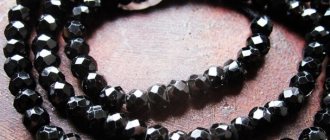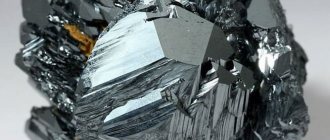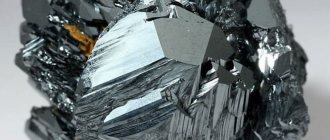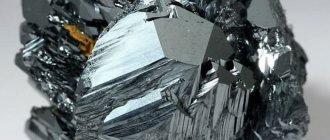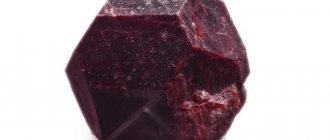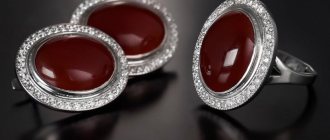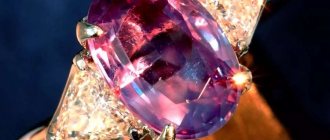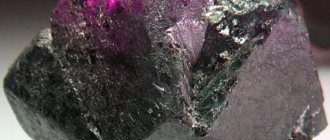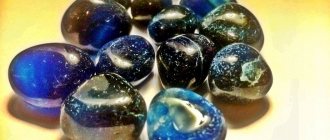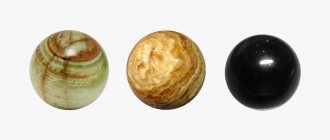Unique gemstone changes color depending on the light
Alexandrite was discovered relatively recently, only about two centuries ago, but already has a rich history and great popularity. Alexandrite jewelry looks great in both gold and silver. As a fossil, it is rarely found in nature, making the crystal very expensive and unique.
Historical reference
There are two official versions of the appearance of the name of the stone alexandrite, which most mineralogists know.
According to the first version, the mineral alexandrite was discovered by the Finnish mineralogist, corresponding member of the St. Petersburg Academy of Sciences Nils Nordenskiöld (1792-1866). On April 17, 1834, among the samples probably received from L. Perovsky, he found a strange-colored stone.
At first, observing the deep green color and low refractive indices, Nordenskiöld decided that this was not a completely pure emerald. However, when measuring the hardness of the stone, unexpectedly high values were obtained: 8.5 instead of 7.5 (usual for emerald).
Unable to complete the diagnostics on the spot, in the field, the Finnish mineralogist put the strange stone in his pocket, deciding to study the sample at his leisure. The opportunity presented itself only late in the evening. Nordenskiöld took out the stone and decided to take a good look at it with lit candles. However, in the hands of the Finnish scientist, instead of a green stone, there was a bright red crystal. This is how alexandrite was discovered, named in honor of the future Emperor Alexander II, who celebrated his coming of age on this very day.
According to the second version, alexandrite was first found at an emerald mine on the Tokova River in the vicinity of Yekaterinburg in 1833; it was described as an emerald by Y. V. Kokovin (Oberg Gittenferwalter of the Yekaterinburg Lapidary Factory) and sent to St. Petersburg. The properties of the new mineral were studied by Lev Alekseevich Perovsky (1792-1856), who was the Minister of Appanages at that time. Confused by the increased hardness of the “emerald,” Perovsky also noted a change in color.
Initially, Perovsky planned to name the new mineral “diaphanite” (from ancient Greek διαφανής - “brilliant, bright”), however, taking advantage of the favorable moment to distinguish himself before the royal family, he presented the mineral to the coming of age (16th birthday) of Alexander (the future Tsar Alexander II ) April 17, 1834. A description of a mineral called alexandrite (a type of color-changing chrysoberyl) was first published in 1842.
Since rare gems bearing the king's name reflected the national colors of luxury (green and red), alexandrites immediately gained recognition among the elite. Necklaces, earrings with alexandrite and other jewelry were worn only by court ladies and the wives of foreign diplomats. Due to its extraordinary rarity and high cost, only the elite could afford to buy alexandrite or jewelry with alexandrite. Nikolai Leskov wrote about alexandrite:
...The rarity of this stone has increased even more for two reasons: 1) from the belief that has taken root among stone seekers that, where alexandrite appears, it is in vain to look for an emerald, and 2) from the fact that the mines where the best specimens of the stone of Alexander II were obtained - flooded with water from the broken river. Thus, please note that alexandrite can very rarely be found among Russian jewelers, and foreign jewelers and lapidaries, as M. I. Pylyaev says, “know about it only by hearsay.”
— Nikolay Leskov
Based primarily on the “patriotic” name of the stone, as well as the fact that its only deposit was located in the Urals, alexandrite was widely advertised and proclaimed a “truly Russian stone.” However, by the end of the 20th century, alexandrites gradually lost their patriotic luster. Their deposits were successively found in Brazil, South Africa, Madagascar and Sri Lanka.
APPLICATION
The main use of alexandrite is in jewelry production. Being a very expensive gemstone, it is perfect for luxurious necklaces or earrings. However, today it is unlikely to be possible to buy it in a regular jewelry store. The thing is that the production of jewelry with alexandrite is a rather labor-intensive process. This is especially true for jewelry with a stone weighing more than one carat. Alexandrite stones themselves rarely exceed this value. Based on this, you should be very careful when choosing alexandrite jewelry so as not to stumble upon a fake.
Alexandrite – Al2BeO4
| Molecular weight | 126.97 g/mol |
| origin of name | Named in 1842 by the Finnish mineralogist N. Nordenskiöld in honor of the Russian Tsar Alexander II |
| IMA status | valid |
Physical and chemical properties
Alexandrite is a natural variety of the mineral chrysoberyl (BeAl2O4) with an admixture of chromium. First described in 1842. It differs from other, usually yellowish-green, chrysoberyls in that it has strong pleochroism.
| Property | Description |
| Formula | Al2BeO4 |
| Impurity | Cr |
| Hardness | 8,5 |
| Density | 3.5–3.84 g/cm³ |
| Refractive index | 1,744–1,758 |
| singonia | Rhombic. |
| Kink | Conchoidal. |
| Cleavage | Imperfect. |
| Shine | Glass. |
| Transparency | Transparent or translucent. |
| Color | In daylight: dark blue-green, bluish green, dark grass green, olive green; In evening or artificial light: pink-crimson, red-violet, purple. |
Alexandrite Structure
This "Alexandrite effect" allows the gem to appear blue-green, olive green or grassy in sunlight and crimson, violet-red or purple in dim evening light. Some gem samples are endowed with opalescence - a cat's eye effect.
STRUCTURE
Alexandrite is a biaxial crystal of orthorhombic symmetry with lattice parameters a = 0.9404 nm, b = 0.5476 nm, c = 0.4427 nm. Space group D2h, point group – mmm. Rhombic syngony. The crystal structure of alexandrite is the same as that of chrysoberyl, in which oxygen ions form a dense hexagonal packing; in the voids of the packaging, beryllium ions are in quadruple coordination of oxygen ions, aluminum ions are in sixfold coordination.
Colors and varieties
Without knowing what this “chameleon” is, it is very easy to stumble upon a fake. Before buying products with alexandrite, understand what distinctive properties it has:
- the color of alexandrite in daylight ranges from blue to green shades;
- when in a room where lamps are turned on or candles are lit, the gem changes its color to a blood-crimson color.
This is general information to help distinguish an artificial alexandrite stone from a real one. But it is a mineral found in several varieties. Each of them has its own differences depending on the deposit.
Natural Ural stone alexandrite
For example:
- The Ural species is recognized as the mineral with the most beautiful color palette. In artificial light it appears purple or violet.
- Brazilian. It has smoother transitions between colors compared to the bright contrasts of the Ural mineral.
- The Indian gem plays green-blue hues in daytime color.
- The color of stone mined in Sri Lanka appears duller in sunlight and has a brownish tint.
SUBTLES OF PURCHASE AND CARE
In terms of properties and appearance, the “widow’s stone” is compared to diamonds, rubies, and sapphires.
Therefore, it is important to be able to choose correctly such an expensive and rare gem.
How to distinguish natural stone from artificial
In order not to make a mistake and purchase natural alexandrite, you need to request a certificate of authenticity when purchasing. If there is no certificate, a jewelry examination is ordered from a gemological laboratory. It is impossible to distinguish real alexandrite from a fake without special equipment and preparation.
Authentication
Place of Birth
Alexandrite
Deposit in the village of Malysheva (Malyshevskoye deposit, formerly owned by JSC Emerald Mines of the Urals) is the largest primary emerald deposit in Europe and the only one in Russia. The enterprise processes 93.7 thousand tons of rock per year. Up to one and a half kilograms of emeralds, 30 kilograms of beryls, and 100 grams of alexandrites are mined daily.
Along with Russia, Sri Lanka is an important supplier of alexandrites to the world market for colored gemstones, where alexandrites are found in placer deposits with another variety of chrysoberyl - “cat's eye”.
The alexandrite deposit in Brazil was discovered in the mid-1980s in the state of Minas Gerais in the Hematita region, which was almost completely depleted within just three months from April to June 1987. Subsequently, discoveries of alexandrites were sporadic.
New countries supplying alexandrite to the world market include Tanzania and Madagascar. Here alexandrites are found in ruby and sapphire mining areas. In general, alexandrites from African deposits are characterized by low contrast of color changes
Medicinal properties
Alexandrite jewelry
Alexandrite has powerful energy, for this reason it is not advisable to wear it constantly. But for medicinal purposes it should be kept with you until the disease subsides.
Alexandrite is effective for the following ailments:
- Disorders of the stomach and intestines;
- Phlebeurysm;
- Anxiety, chronic fatigue, insomnia, worry and fears;
- Skin diseases;
- Malfunctions of the pancreas;
- Alcohol addiction (it is recommended to put the stone in a vessel with water overnight, and drink 200 ml in the morning on an empty stomach. Continue the course until the desire to drink alcohol disappears).
Important!
Only natural Alexandrite really helps, but not artificial or fake. Therefore, before purchasing, you need to make sure that the stone is natural.
The magical properties of alexandrite
Ring with alexandrite
The magical properties of alexandrite make it an indispensable companion for anyone who is in a difficult period of life and needs help.
Among the most useful magical properties of the mineral are the following:
- assistance in finding inner harmony;
- gaining strength to deal with life's difficulties;
- development of creative abilities;
- foreseeing key life turns;
- good luck in gambling and financial activities;
- strengthening internal confidence in one’s capabilities;
- increasing vigor and performance.
Alexandrite is called the prophet stone. It is believed that it is able to warn about important events and unplanned changes in life. It also warns of impending troubles - at such moments the mineral begins to glow with golden hues.
Jewelry with this gem can improve your mood and perfectly replenish vital energy. But they should be worn with caution, because in some cultures the mineral is considered a talisman for lovers, and in others it is a stone of jealousy.
The negative property of alexandrite is that it can repeatedly enhance the emotions experienced by its owner. This means that the owner of such a talisman will have to learn to control his thoughts and words.
But for those with a choleric temperament, it is better not to wear such talismans, because self-control is difficult for them. Therefore, alexandrite is not recommended for fire signs of the zodiac.
Name compatibility
A strong stone is a reliable patron of a strong name. Alexandrite – suitable for names:
- Alexandra. Alexandra's unbalanced character and frequent mood swings need to be pacified. The gem will calm, balance in moments of temper and cheer up when despondency overtakes.
- Alexander. The stone affects the owner’s emotional background in the same way as it does Alexandra. In addition, the talisman will attract good luck, financial well-being to the owner, and will help to be open in relationships. The nugget will protect against stress, and in case of danger to physical or psychological health, it will change color.
- Lyudmila. She is characterized by excessive emotionality, which often leads to the wrong hasty actions. The amulet will calm the storm of emotions, removing obstacles in Lyudmila’s life path. And the change in color of the mineral will warn her of dangers.
Alexandrite is suitable for anyone who feels the strength to withstand its energy. Zodiac affiliation plays a significant role.
Alexandrite - widow's stone of loneliness?
Alexandrite pendant
In Russia, alexandrite was considered a stone of loneliness and sadness. After the death of a loved one, a woman should wear jewelry with alexandrite only in pairs. In 1881, after the assassination of the Tsar, the stone became fashionable, and two diamonds should be worn with alexandrite, which was the personification of Alexander II himself and his main actions - the abolition of serfdom and the establishment of new legal proceedings.
And during the war, when a flood of funerals fell on women, the name “widow’s stone” was firmly assigned to alexandrite.
In Europe, alexandrite is a symbol of amorousness and jealousy, and in India and Sri Lanka it is a symbol of longevity and prosperity. The clergy favored this stone, believing that it pacified the soul. It was generally believed that the color of alexandrite could depend on the mood of the owner, and its change warned of illness or danger.
Alexandrite is also considered by some to be the “stone of strong people.”
Purity
The next evaluation factor is the purity of alexandrite. This gemstone is classified as a type that is characterized by not having a very large number of inclusions and cracks. It is characterized by gas-liquid veils. Absolutely pure specimens, without internal heterogeneities, are quite rare in nature. Opaque alexandrites are used to make cabochons.
In the video: dark alexandrite, in which inclusions are not visible, 10.23 ct, origin Sri Lanka
“Practical advice. After you have assessed the color of alexandrite, evaluate its purity. Make sure the sample is well rubbed and has no surface contamination on the edges. First check cleanliness with the naked eye. Are any visible cracks or inclusions? It is advisable that they should not be in the center of the cut stone. See if defects have a significant impact on overall attractiveness? Then, you can look at the transparency of alexandrite with a 10x triplet magnifying glass for a more thorough analysis. At the same time, pay attention to whether there are any significant cracks in the sample that extend to its surface. Their presence may affect durability.“
Artificial alexandrite
Artificial Alexandrite
In the second half of the 20th century, numerous attempts were made to obtain artificial alexandrite, some of which were successful.
Thus, in Novosibirsk it was possible to grow alexandrite crystals that, like natural ones, change color depending on the lighting. The experiments were carried out using the Czochralski method at a temperature of almost 2500 Kelvin. The dimensions of the grown crystals and their shape generally depend on the location and orientation of the seed. In less than a week, it was possible to synthesize fairly long transparent “icicles” of alexandrite with a length of up to 12 and a diameter of up to 3 centimeters.
American scientists from the Bell Laboratory tried to obtain artificial alexandrites using another method: polarization of a solution of molten salts. The resulting crystal samples reached a length of almost four and a half centimeters: a kind of record, although inferior to the Novosibirsk crystals.
Sometimes in jewelry stores you can find stones that, depending on the lighting, change color from purple-blue to pink. They are also called alexandrites. However, these stones have nothing to do with alexandrite. Crystals grown in a Verneuil furnace consist mainly of aluminum and vanadium oxides. In other words, these are colored artificial corundums. Many natural sapphires (so-called “colored”, which have fancy colors) also tend to change color depending on the light spectrum. In some samples (especially lilac and violet), the play of these minerals is reminiscent of alexandrites.
MORPHOLOGY
Alexandrite crystals have a thick-tabular, sometimes short-prismatic appearance and are characterized by a combination of pinacoids (100) and (010), as well as prisms (011) and (120). Sometimes they are joined by bipyramid faces (111). Typical for alexandrite is the development of regular intergrowths along the prism (031), consisting of three individuals that mutually grow each other. The planes (100) merge into one, and only the direction of shading on these planes makes it possible to distinguish areas belonging to individual individuals. Twin intergrowths are better defined when the bipyramid planes (121) form reentrant angles; if these planes are absent (which is more common), the intergrowth resembles a single hexagonal crystal.
Products and jewelry made of alexandrite
Alexandrite jewelry
Alexandrite is a first-order mineral, that is, the most expensive. Fellow “caste” stones are rubies, diamonds, emeralds and sapphires. The price of one carat of the purest alexandrite can reach 1 million US dollars. Individual pieces are valued at more than similar diamonds.
Today, jewelers offer jewelry with natural or artificial stone. It is worth noting that an artificial mineral is inferior to a natural one only in price, but in properties, appearance and degree of pleochroism it sometimes surpasses a natural gem. Naturally, the synthetic analogue has neither magical nor healing abilities.
So, pure, flawless alexandrite can most likely be found only in private collections, or you can order custom-made jewelry. Both will cost exorbitant amounts of money. On the shelves of jewelry stores you can find either artificial minerals or natural ones, but of lower quality (insignificant reverse indicator, turbidity). The prices of both options are comparable.
Jewelry with natural alexandrite is made from gold or platinum. In addition to these metals, synthetic stones are also set in silver. Starting price for a product with an artificial gem:
- Gold earrings – from $500.
- Ring – from $300.
Silver products are cheaper. But products with natural stone of the highest category are purchased at auctions for millions of dollars.
Is synthetic alexandrite better or worse than the original?
The main advantage of synthetic alexandrite over natural alexandrite is price. Although due to the high cost of production it cannot be called completely cheap, it is still much cheaper than the original. Visually, the stone is indistinguishable: to see the differences, you need a microscope.
Alexandrite synthesized by the Czochralski method has pure and bright colors. It exhibits a strong reversal: it turns from red to green when the lighting changes, and vice versa. Natural stones with such a pronounced color change effect are rare.
Synthetic alexandrite is practical. If you love this amazing stone, you can wear jewelry with it every day without worrying too much about possible loss. Jewelry with natural alexandrites, which cost fabulous amounts of money, will most likely remain in the box most of the time.
Alexandrite price
Alexandrite (cut)
Jewelry with alexandrite was almost always made only to order. The cost of alexandrite varies from 5,000 to 37,000 USD per carat. At the same time, the price of alexandrite depends on their color, purity and weight.
Note that natural alexandrite is a very small stone, and a faceted insert rarely exceeds a weight of 1 carat.
It is also noteworthy that most of the gold jewelry with alexandrite, made at the turn of the 18th-19th centuries, was melted down. In this sense, any antique items containing alexandrite are extremely rare. The cost of such products is often determined only by the result of the auction.
The most common cuts for alexandrite are step or diamond teardrop.
How to recognize a fake
Alexandrite stone
There are several valuable recommendations to distinguish a fake from a real Alexandrite. The most important thing is that it cannot be cheap and cannot weigh more than 3 carats (1 - 2 carats is already a large stone).
How to distinguish from a fake:
- There must be a certificate “must be presented with the stone”.
- Color: from deep tones of green to bright red with a yellowish tint.
- If, under high magnification, air bubbles are visible in the mineral, then this stone is not Alexandrite.
- When jewelers offer a specimen that is too large and too pure in color, then most likely it is artificially grown Alexandrite.
- Spinel, which is also grown artificially, is often passed off as an imperial stone. But its shades are only pinkish-blue, and there is no yellow at all. If the lighting is too strong, the color becomes bluish-violet, but the classic transition from green to red is not observed.
- Alexandrite can be brought from Madagascar, Sri Lanka or South Africa.
- When in Egypt, you should not listen to mineral traders. Alexandrite does not come from the name "Alexandria". In Egypt, these natural stones are not mined or exported, even less so. They sell ordinary glass to tourists.
There is a whole list of minerals in the world that can change color. They are sometimes offered instead of Alexandrite:
- Amethyst. Changes in shades are also visible, but exclusively in the pink-violet range. There is no green.
- Pomegranate. Often confused with Alexandrite. In some cases, it can even be mistaken for a royal stone, but blue-violet shades cannot be found.
- Watermelon variety of tourmaline. The same change occurs from red to green, but it does not depend on the type of lighting, but on the angle of incidence of the light.
- Ruby. The hardest one to distinguish from Alexandrite. The color palette is almost the same; even professionals can often make mistakes. However, rubies are still cheaper.
How to care for stone
Ring with alexandrite
Natural alexandrite is a beautiful and expensive stone that requires special care. It is damaged by alkalis - jewelry must be removed for any work where substances with an alkaline reaction are used (cleaning products, dishwashing detergents).
The mineral should be stored in a wooden box, wrapped in a soft cloth, separately from other jewelry.
The gem needs to be cleaned as it gets dirty:
- Washing with warm water and soap is allowed;
- Particularly dirty areas should be cleaned with a soft brush;
- After washing, wipe dry with a soft cloth to avoid the appearance of streaks on the surface;
- You can use an ultrasonic cleaner.
Compatibility with other stones
The Imperial Nugget is a Water stone. The mineral, unique in everything, has shown a special uniqueness here - friendliness towards Fire. However, not all fire gems can become friends of alexandrite, but only stones of equal rank and luxury - rubies and diamonds. But heliodor, garnet and grossular do not go together. Air minerals are also not a match for him. Among them:
- Amethyst;
- Rhinestone;
- Demantoid;
- Uvarovite;
- Smoky and rose quartz;
- Amazonite;
- Topaz.
Alexandrite will tolerate representatives of the Earth next to it, but only of the highest degree of value, such as:
- Turquoise;
- Jade;
- Chalcedony;
- Onyx;
- Jasper.
It is better not to use jet and cacholong with Alexandrite in the same jewelry.
And, of course, the most successful combination is native water minerals:
- Pearl;
- Opal, including the black variety;
- Sapphire;
- Moon rock.
Alexandrite is most closely related to emerald.
Note
Alexandrite contains an inner strength that can attract difficulties and at the same time resist them. Due to its rarity and high cost, not everyone can afford to feel the support of this unusual mineral. Those who have such an honor are very lucky, because having a persistent character and strong will, you can enlist the support of the imperial nugget from the Urals.
Photo gallery of stone
5/5 — (1 vote)
Alexandrite suits who according to the zodiac
Gold earrings with alexandrite
Selecting a stone based on intuitive feelings is good. But what should those who don’t have much intuition do? Trusting the first seller you come across is not the best decision, because he is too interested in selling his goods.
In this case, all that remains is to trust the specialists who compiled the compatibility according to the horoscope.
The meaning of alexandrite stone for zodiac signs will be as follows:
- Aquarius. The gem helps this air sign to sharpen their intuitive perception of the world and promotes creative development.
- Scorpion. It helps Scorpios realize their dreams, overcoming any difficulties on the way to their goal.
- Fish. Luck will follow you through life.
- Twins. For twins, this amulet will become a protector of peace of mind.
- For Capricorns, the stone will help improve their financial situation, as well as strengthen their intuitive thinking.
- For Libra, the mineral will help reveal creative inclinations and give good luck in business.
- A lion. The mineral will help these regal and ambitious natures reach new heights in their careers and cool their excessive temper.
It is these signs that the alexandrite talisman will bring the greatest benefit. It is especially useful for water signs. Not only for Aquarius and Scorpio, but also for Pisces. The rest of the zodiac signs can also wear alexandrite, each of them will receive something useful from the stone. But fire signs, with the exception of Leo, are better off not wearing such an amulet.
Interesting Facts
- A unique druse of alexandrite, consisting of 22 crystals, was found in 1840 in the Urals. Its weight is 5.38 kg. Kept in the Mineralogical Museum named after A.E. Fersman.
- In Soviet times, Alexandrite mining was strictly controlled. It was not used to make jewelry for a wide range of consumers. All our grandmothers' jewelry does not contain Alexandrite. It was replaced with artificially grown corundum with the addition of vanadium.
- It is very difficult to find a large stone in nature; it is rare to find a stone weighing more than 3 carats. The largest was found in the Malyshevskoye deposit and weighed 350 grams.
Sources and literature
- S. Akhmetov. "Conversations on Gemology." - M.: “Young Guard”, 1989. - 237 p.
- Ya. P. Samsonov, A. P. Turinge. Gems of the USSR / Ed. V. I. Smirnova. - M.: Nedra, 1984. - 335 p. — 90,000 copies.
- Koksharov, Nikolai Ivanovich. Materials on mineralogy of Russia. - St. Petersburg, 1852-1862.
- Kozlov, Yuri Sergeevich. Alexandrite. - M.: “Science”, 2003. - 74 p.
- Stone, Jasper. All about precious stones. - St. Petersburg: “Crystal”, 2006. - 176 p.
- Description of alexandrite on the Wikipedia website.
5 / 5 ( 15 votes)
History and origin
Alexandrite is rightfully considered a native Russian stone. The world's first specimen of the mineral was found in emerald mines near Yekaterinburg. This happened not so long ago, in the 30s of the 19th century, but now there are two versions of this event, which voice different dates of the discovery and different names of the discoverers.
According to one interpretation, the nugget was first found by Nils Nordenskiöld on April 17, 1834. The Finnish scientist did not have the opportunity to meticulously examine the strange find in the field, so at the first examination, the mineralogist decided that he had discovered an emerald crystal of not the highest degree of purity. This conclusion was based on the fact that the sample had a rich green color and low refractive indices.
After measuring the hardness of the stone, the confidence that it was an emerald was shaken. The instruments showed a value of 8.5 points on the Mohs scale, while for emerald this indicator should be a point lower. That same day, late in the evening, the scientist decided to examine the find by candlelight. Imagine Nordenskiöld's amazement when, instead of a green gem, he took a fiery red stone out of his pocket. The discovery of alexandrite occurred on the 16th birthday of Alexander II, the future Emperor of Russia, so the mineral was named in his honor.
Another version differs significantly from the first. Thus, alexandrite was discovered a year earlier, in 1833. The discovery was made by Ya. V. Kokovin. This happened in the emerald mines of the Tokovaya River, so the mineral was initially described as an emerald. The find was sent to St. Petersburg for detailed study.
There, Minister of Development L.A. Perovsky, assessing the increased hardness and pronounced pleochroism (change of color), concluded that it was not an emerald. At first they decided to call the find diaphanite, but later an opportunity arose to distinguish itself at court. Therefore, Perovsky presented the gem to the 16th anniversary of Alexander II, naming the stone after the future emperor.
This is interesting! In 1840, an alexandrite druse consisting of 22 crystals was discovered. The unique Ural find weighs almost 5.5 kg and is located in the Fersman Museum.
The Russian Empire, by chance, gave alexandrite many nicknames. First of all, the mineral became famous under the name “imperial stone”, as it became the personal amulet of Emperor Alexander II. It is known that during his life the Russian Tsar was able to escape the death prepared for him by his ill-wishers seven times. Only the eighth attempt became fatal for him. There is an opinion that Alexander’s life was preserved for many years by a ring with alexandrite. In addition, the nugget was green in daylight and red in evening light, which symbolized the two national colors of Russia.
Do you know that not only alexandrite can change its shade depending on the lighting. Green in daylight, and red in lamplight, can be a variety of garnet with chromium impurities, as well as polychroid green sapphire.
Almost immediately after the discovery of the gem, it became very popular among the Russian nobility. Moreover, people of exclusively noble origin who bore noble names could have alexandrite jewelry. The mineral became a heirloom. Even the richest merchants could not possess the desired jewel, since they had finances, but did not have a noble surname.
Thus, entering the 20th century, alexandrite became a fabulously expensive gem. By that time, all Russian nobility already possessed a sufficient amount of status jewelry. The outbreak of the First World War brought another glory to the mineral and another name – “widow’s stone”. The fact is that all Russian officers were of noble birth and the war took them all away in the first half of the year. Therefore, alexandrite became a symbol of women who did not receive their husbands from the battlefield.
A description of the stone in scientific literature appeared only in 1842. For a long time, the royal gem was considered an original Russian stone. Only at the end of the 20th century, other countries of the world began to find the mineral one by one - Brazil, South Africa, the islands of Sri Lanka and Madagascar.
Also read: Bixbit - a talisman for travelers
